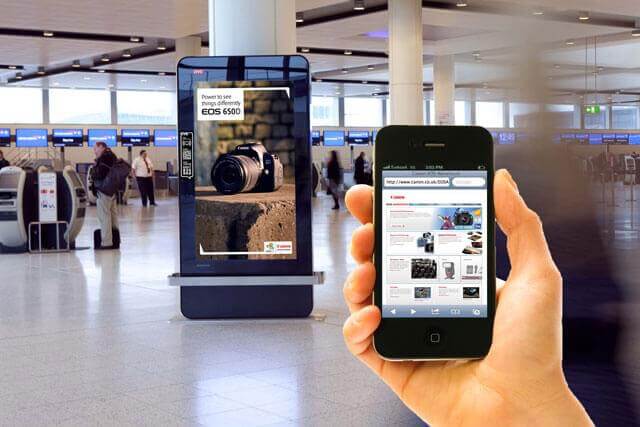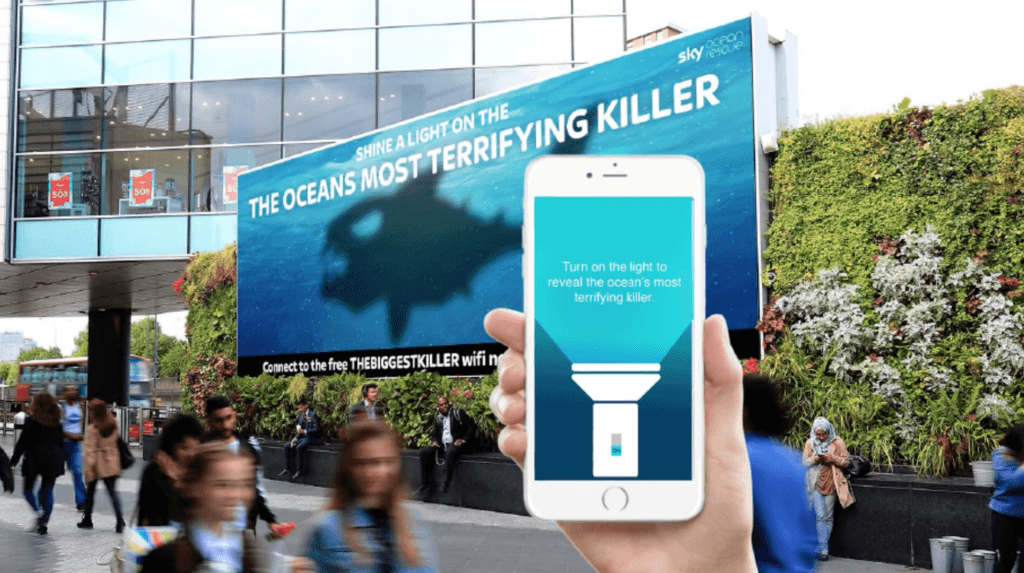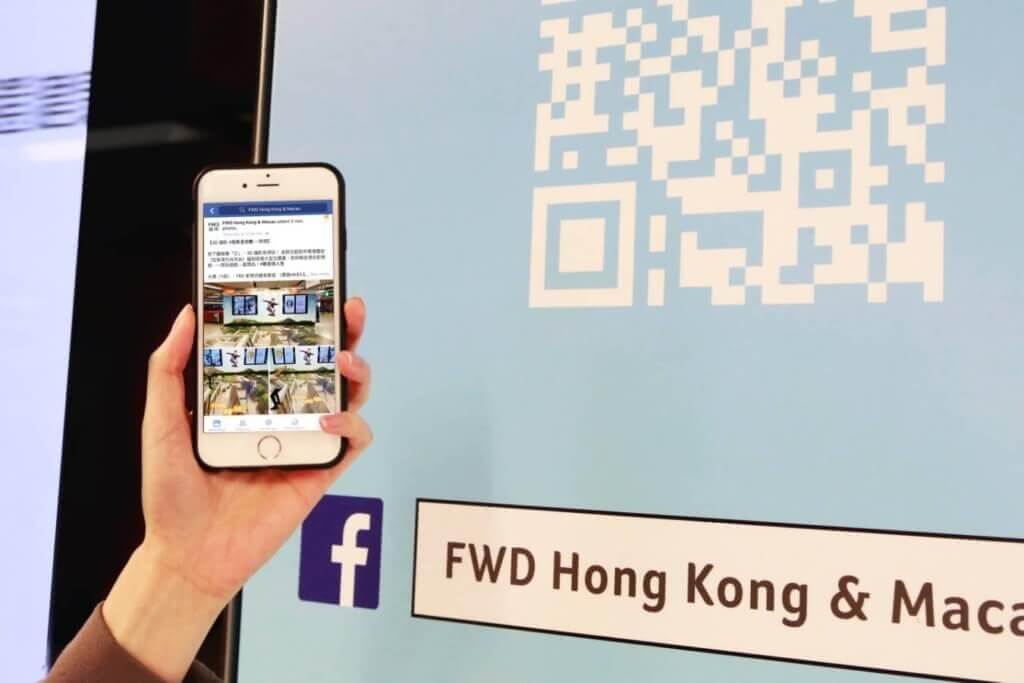
Combining out-of-home (OOH) advertising with mobile advertising equals better campaign results. For many years now, this has been a hot topic within the advertising industry. In this tech-savvy age, almost everyone has access to a mobile device. In fact, an eMarketer report showed that people spend over three hours a day on their devices, more than they spend watching T.V.
In their 2019 study, Nielsen reported that 66% of mobile users took some sort of action after seeing an OOH ad. This number significantly increases when brands integrate OOH with mobile advertising. Brands are now realizing these two mediums are even more powerful when they work together.
OOH + Mobile = Greater Success
It takes about 0.4 seconds for humans to understand a mobile ad. In addition to short attention spans, ads need to be striking to a get a message across. OOH displays help lay a foundation, they build brand awareness, and increase the effectiveness of digital ads. When the user sees the advertisement for the second time through a device, it creates a more impressionable impact.
Traditional OOH falls short when it comes to consumer interactivity. Without mobile advertising, consumers can’t automatically be taken to a website, or see more details. Smartphones are a very personal tool that almost every consumer has. By targeting mobile devices that are in close proximity to an OOH ad (using technologies like geo-fencing), brands can promote their messages to amplify their reach.

Mobile Geofencing
Geo-fencing is a powerful tool because it can help harness location data, to create relevant ads that have the greatest impact on a target audience.
OOH media has remained an effective advertising medium due to its ability to deliver a message to large target audiences without being skipped or ignored. Targeting the same audience with OOH and digital ads increases reach and creates a bolder message that’s not easily forgotten.
So how exactly are brands using geo-fencing? With advancements in technology, it’s been made possible to target consumers in real time. Consumers in the area of an OOH display can have a specific ad delivered to their mobile phone. This is done through pre-bid integrations and demand-side platforms, which work to run campaigns on mobile by comparing coordinates of the user and OOH ad in real time.
Within geofencing, brands can geo–conquest – when they target devices which have visited competitor locations, geo-farm – when they target devices in specific locations or retarget – delivering messages to users who have interacted with the brand previously. These are just a few ways geo-fencing can be used to acquire customers.
Interactivity

Brands are increasingly equipping their OOH displays with interactive features. One common push function includes beacons. These are battery-operated Bluetooth modules that can be attached to OOH media. If users in the area have a corresponding app, they are able to receive push notifications from the brand.
For example, QR codes and promo codes are also interactive approaches to advertising. Users will see a code on an OOH display that can be scanned, and through their smartphones, they’ll be redirected to the company’s website. By fusing two different channels of advertising, brands can better reach audiences through more interactive campaigns.
What Are Brands Currently Doing?
One electronics retailer wanted to increase the sales of their gaming consoles during a limited-time price incentive. They used OOH displays within five miles of the stores and also retargeted consumers who passed by the displays. They saw a 127 percent increase in visitation from those exposed to both the OOH and mobile ad.
In New York, one museum wanted to spark buzz and increase visits for a special artist’s exhibit. They used OOH to display lyrics and other photos in a major transit hub close to the museum. In addition, a code was displayed for onlookers to scan so they could listen to a playlist by the artist. These OOH uses resulted in over 2 million visitors to the exhibit.
Popular brand Danone and the marketing team from Les 2 Vaches needed to run a successful advertising campaign to acquire new buyers. Their campaign consisted of OOH, and Facebook ads. Together these two channels created a cohesive message. The campaign resulted in an impressive 85% reach in all households. They found that OOH was more effective when reaching existing customers, while Facebook was better when finding first-time buyers.
Final Thoughts
More and more brands are starting to use these channels together to increase their reach, leading to better business results. Out-of-home and mobile advertising are certainly effective mediums on their own but when they are used together, they generate even greater success.


